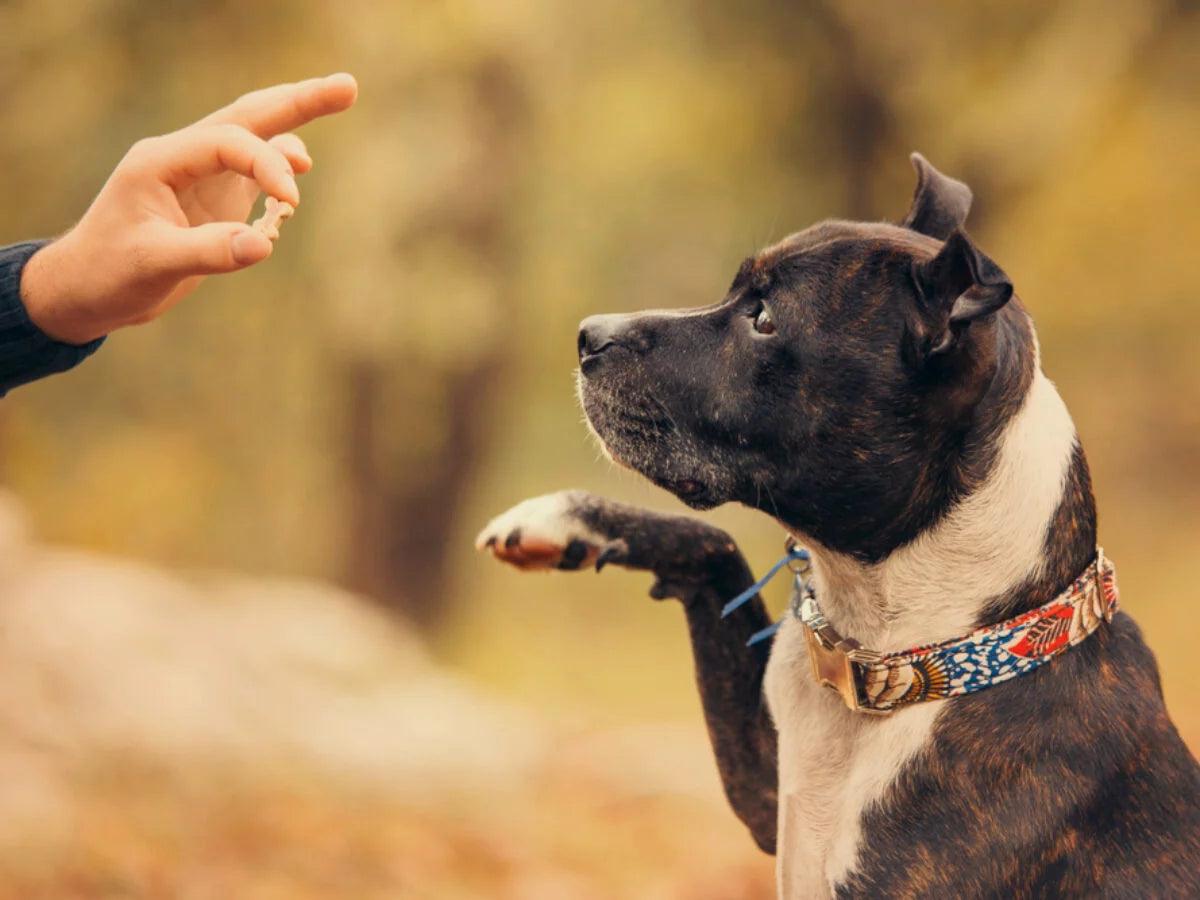
A Tis For Dog Training
Dog training is the process of teaching a dog to perform specific behaviors or actions in response to specific cues, either verbal commands or physical signals. Training is essential for creating a well-behaved, well-adjusted dog and strengthening the bond between the dog and the owner. Here’s a comprehensive guide to dog training:
Why Dog Training is Important:
- Safety: Training ensures that a dog listens to commands like "come" or "stop," preventing them from running into dangerous situations.
- Behavior Management: It helps manage common behavioral issues like excessive barking, jumping, or aggression.
- Bonding: Training enhances communication between the dog and the owner, building trust and mutual understanding.
- Mental Stimulation: Training exercises a dog’s brain and provides enrichment, keeping them mentally healthy.
- Socialization: Training also helps dogs learn how to behave around other dogs, people, and in different environments.

Types of Dog Training:
-
Obedience Training:
- Focuses on teaching basic commands such as "sit," "stay," "come," "down," and "heel."
- This type of training is essential for good behavior and control, especially in public settings.
-
Behavioral Training:
- Aims to address specific problem behaviors, such as excessive barking, chewing, digging, or aggression.
- Behavioral training is often needed when dealing with rescue or shelter dogs that may have had traumatic experiences or lack early socialization.
-
Socialization Training:
- Introduces dogs to new environments, people, and other animals in a controlled manner.
- This helps prevent anxiety, fear, or aggression in new situations.
- Socialization is critical in the early stages of a dog’s life but can be done with older dogs as well.
-
Agility Training:
- Involves teaching a dog to navigate obstacle courses and can be both a physical and mental workout.
- Common in competitive dog sports, agility training enhances a dog’s coordination, speed, and responsiveness.
-
Clicker Training:
- A form of positive reinforcement where a clicking sound is used to mark the exact moment a dog performs a desired behavior, followed by a reward (treat, praise, etc.).
- This technique helps dogs quickly associate good behavior with a positive outcome.
-
Crate Training:
- Teaches dogs to see their crate as a safe and comfortable space.
- Helps with housebreaking, provides a safe environment for the dog when unsupervised, and can make traveling less stressful.
-
Housebreaking (Potty Training):
- Teaches dogs where and when it’s appropriate to relieve themselves.
- Consistency is key in teaching dogs the correct spots (usually outdoors or on pee pads) and preventing accidents inside the house.
-
Leash Training:
- Helps the dog learn to walk calmly on a leash without pulling, jumping, or lunging.
- Proper leash behavior is important for walks and outings to keep the dog and others safe.
Training Methods:
-
Positive Reinforcement:
- How it Works: Reward-based training where the dog is rewarded with treats, praise, or toys for performing the correct behavior.
- Benefits: Builds a positive relationship with the dog, increases motivation, and strengthens desired behaviors.
- Examples: Treating the dog when they sit on command or praising them when they come when called.
-
Negative Reinforcement:
- How it Works: Involves the removal of something unpleasant to encourage a behavior. For example, loosening the pressure on a leash when a dog stops pulling.
- Benefits: Teaches the dog that certain behaviors will make uncomfortable situations stop.
- Caution: This method should be used carefully to avoid causing fear or stress.
-
Punishment-Based Training:
- How it Works: Uses corrections or punishment to stop unwanted behaviors (e.g., a verbal reprimand or a slight leash tug).
- Risks: Can lead to fear, anxiety, or aggression in the dog if used improperly. Positive reinforcement is generally preferred.
-
Balanced Training:
- How it Works: Combines positive reinforcement with corrections or consequences for undesirable behaviors.
- Benefits: Provides a well-rounded approach, though it requires skill to avoid causing negative side effects.
Tips for Successful Dog Training:
- Start Early: Begin training as soon as you bring your dog home. Puppies are most receptive to learning between 8-12 weeks, but older dogs can also learn with patience.
- Consistency is Key: Use the same commands and rules every time. Inconsistent signals can confuse your dog and slow progress.
- Short Sessions: Dogs, especially puppies, have short attention spans. Keep training sessions to about 10-15 minutes to avoid frustration.
- Use High-Value Rewards: Use treats or toys that your dog really loves to increase motivation. Gradually phase out treats as the dog masters the behavior.
- Timing is Crucial: Reward or correct the behavior immediately so the dog can make the connection between the action and the outcome.
- Patience: Dogs learn at different paces. Avoid getting frustrated, as this can negatively affect the learning process.
- Socialization: Expose your dog to various environments, sounds, people, and other dogs. Early socialization can prevent future behavioral issues.
- End on a Positive Note: Always finish training sessions on a success, with a reward, to keep the experience enjoyable for the dog.
Common Commands to Teach Your Dog:
- Sit: Teaches your dog to sit on cue. This is usually the first command taught and serves as the foundation for more advanced commands.
- Stay: Instructs the dog to remain in place until released.
- Come: A recall command to get the dog to return to you. This is vital for safety, especially outdoors.
- Down: Teaches the dog to lie down.
- Heel: Instructs the dog to walk by your side, often used during leash training.
- Leave It: Tells the dog to ignore an object or distraction.
- Drop It: Used when you want your dog to release something from their mouth.

When to Seek Professional Help:
- Severe Behavioral Problems: Issues like aggression, separation anxiety, or extreme fearfulness may require the help of a professional dog trainer or a behaviorist.
- Specialized Training: For more complex commands or advanced training (such as for service dogs, therapy dogs, or agility training), a professional trainer is beneficial.
Types of Professional Trainers:
- Dog Obedience Trainers: Specialize in basic obedience and general behavioral issues.
- Certified Animal Behaviorists: Professionals with a deep understanding of animal behavior who can address severe behavioral problems.
- Service Dog Trainers: Experts who train dogs for specific roles, like assisting people with disabilities.
In summary, dog training is essential for building a positive, healthy relationship with your dog. It helps ensure their safety, keeps their minds stimulated, and fosters good behavior in various settings. By using a mix of consistency, positive reinforcement, and patience, you can successfully train a well-behaved dog.




